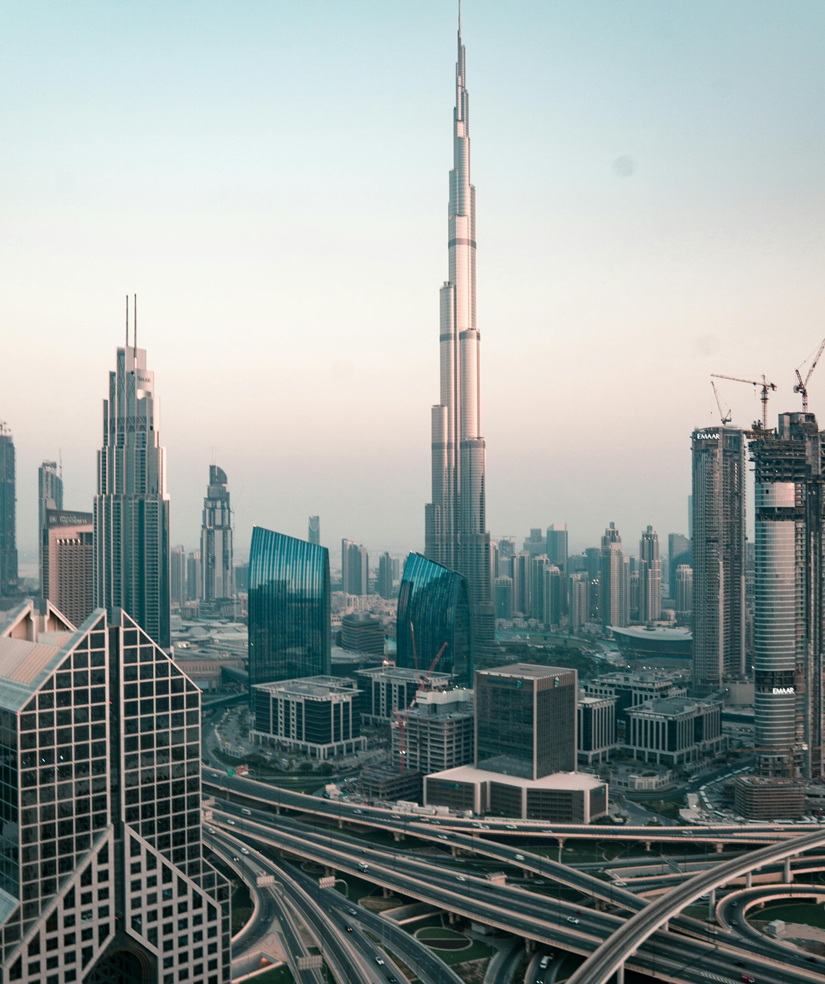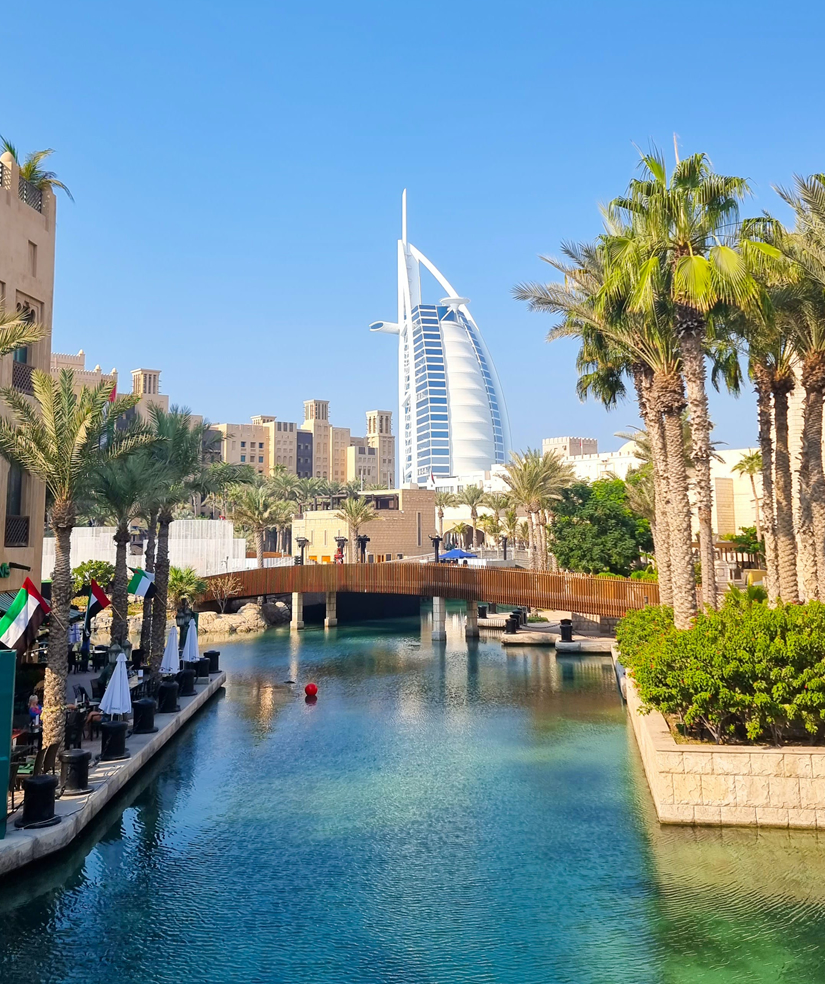The Burj Khalifa, an awe-inspiring testament to human ingenuity, pierces the Dubai skyline with grace and grandeur. As the world’s tallest building, this architectural marvel stands as a symbol of Dubai’s ambition, innovation, and relentless pursuit of excellence.
Continue readingDiscovering Dubai: A Glimpse into the City of Extravagance
Dubai, a city synonymous with opulence and innovation, stands as a testament to the limitless possibilities of human imagination. Nestled on the southeast coast of the Persian Gulf, this modern marvel has rapidly transformed from a humble fishing village into a global icon of luxury, architecture, and culture.
Continue readingKite Beach
Top choice in Dubai
Kite Beach
This long, pristine stretch of white sand, a little way north of Jumeirah Public Beach, is a major draw for sporty types, with a range of activities on offer, including kitesurfing, beach tennis, beach volleyball and kayaking. There’s also a jogging track and a shaded skatepark nearby.
The sand here is super clean and there are showers, wi-fi, toilets and changing facilities, plus lots of food trucks and cafes. The beach also boasts great views of the Burj Al Arab, one of Dubai’s prime landmarks. It gets very busy on Friday and Saturday when a seaside market with crafts and gifts sets up.
To reach the beach head along Jumeirah Rd; the strip of sand is located behind Saga World shopping centre. Parking is available, with a large lot next to Al Manara Mosque. There’s no entrance fee to access the beach.
Restaurants near Kite Beach
There’s a decent smattering of restaurants right next to Kite Beach that’ll suit most tastes. Options include Circle Café, serving breakfast, brunch, coffee and smoothies; popular burger and steak joint X Factor; and Italian-themed Tomato & Basilico. There are also a number of food trucks (notably the excellent Salt, which serves up scrumptious sliders), ice cream places and takeaway coffee spots mere steps from the sand.
Hotels near Kite Beach
Jumeirah offers a great selection of accommodation options. Luxury lovers should steer towards the Burj Al Arab or the hotels at Madinat Jumeirah. The cluster of midrange hotels and hotel-apartments next to the Mall of Emirates offer great value for money. For proximity to Kite Beach, however, Beach Walk Hotel and Park Regis Boutique Jumeirah are two good options, both a 25 to 30 minute walk away.
Article Source
Burj Al Arab
The Burj Al Arab’s graceful silhouette – meant to evoke the sail of a dhow (a traditional wooden cargo vessel) – is to Dubai what the Eiffel Tower is to Paris.
Burj Al Arab
Completed in 1999, this iconic landmark hotel sits on an artificial island and comes with its own helipad and a fleet of chauffeur-driven Rolls Royce limousines. Beyond the striking lobby, with its gold-leaf opulence and attention-grabbing fountain, lie 202 suites with more trimmings than a Christmas turkey.
The Burj Al Arab is worth visiting if only to gawk at an interior that’s every bit as garish as the exterior is gorgeous. The mood is set in the 590ft-high lobby, which is decorated in a red, blue and green color scheme and accented with pillars draped in gold leaf. The lobby atrium is tall enough to fit the Statue of Liberty within it.
If you’re not checking into the Burj Al Arab, you need to make a reservation for cocktails, afternoon tea or a meal to get past lobby security. A minimum spend applies; check the Burj’s website for details.
Architecture of the Burj Al Arab
The Burj Al Arab has 60 floors spread over 1053ft (321m) and was the world’s tallest hotel at the time of its opening. British architect Tom Wright came up with the iconic design and signature translucent fiberglass facade that serves as a shield from the desert sun during the day and as a screen for the impressive illumination at night.
The Burj Al Arab’s interior by British-Chinese designer Khuan Chew is every bit as over-the-top as the exterior is simple and elegant. The moment you step into the lofty lobby, a crescendo of gold-leaf, crystal chandeliers, hand-knotted carpets, water elements, pillars and other design elements put you into sensory overload. Some of the 258,333 sq feet (24,000 sq meters) of marble hail from the same quarry where Michelangelo got his material.
The white metal crosspieces at the top of the Burj Al Arab form what is said to be the largest cross in the Middle East – but it’s only visible from the sea. By the time this unexpected feature was discovered, it was too late to redesign the tower – the hotel had already put Dubai on the map and become the icon for the city. See the cross on a boat charter and decide for yourself. The scale is amazing.
Bars and restaurants in Burj Al Arab
After his death in 1890, Vincent left his complete collection of works to his brother, Theo. When Theo died shortly after in 1891, the collection was handed over to Theo’s widow, Jo van Gogh-Bonger, and after her death in 1925, it was then passed on to her son Vincent Willem van Gogh. He loaned the collection of artworks to Amsterdam’s Stedelijk Museum, before a dedicated museum was called for to house the late artist’s impressive oeuvre.
Opened in 1973, the Van Gogh Museum’s main building was designed by the influential Dutch architect Gerrit Rietveld, who was an important member of De Stijl – a group of progressive artists and architects active in the 1920s. Behind the main building, reaching towards Museumplein, is a separate wing, which was opened in 1999 and designed by Kisho Kurokawa. The transparent building with its state-of-the-art glass structure hosts temporary exhibitions by big-name artists.
In 2015, a swish new extension and entrance hall added 800 sq meters (8600 sq ft) of space to the museum.
Beaches near the Burj Al Arab
For the quintessential Instagrammable photo of you and the Burj Al Arab, take a stroll on nearby Jumeirah Public Beach as the sun dips into the Gulf and then upload the picture via one of the Smart Palms that provide free waterfront wi-fi. This wide, clean band of sand is actually an attractive place to spread your towel any time of day. In fact, now there’s even a floodlit section for nighttime swimming. When the surf’s up, it’s fun to watch the boarders, although waves are only small to medium.
Where to stay near the Burj Al Arab
The Burj Al Arab regularly hosts pop stars, royalty, billionaires and the merely moneyed. The lobby with its eye-catching waterfall and opulent decor is the overture to the 202 richly decorated suites. The North Deck adds two huge pools and 400 sunloungers. Suites are bi-level, and even the smallest measure 1829 sq ft (170 sq meters) and come with a personal butler. The decor is lush, with moiré silk walls, mirrored ceilings over the beds, curlicue high-backed velvet chairs and inlaid bathroom tiles displaying scenes of Venice. And all that gold? Yes, it’s the real 24-karat thing.
For less luxurious options, the cluster of midrange hotels and hotel-apartments next to the Mall of Emirates offer great value for money.
How to get to the Burj Al Arab
The Rijksmuseum is a magnificent art gallery located in Museumplein close to the Van Gogh Museum. If you start early and have plenty of energy you could tackle both in one day, but it’s probably too much – considering The Rijksmuseum itself is over half a mile (1.5km) of gallery space! Spread the visits over a couple of days for a more enjoyable experience.
If you must choose only one and you are a Van Gogh fan, the Van Gogh Museum will be more to your liking as the Rijksmuseum has only a few Van Gogh works on display. But if you want to get an overview of Dutch art and see more of the Dutch masters (Rembrandt, Vermeer, Steen), then spend the day at the Rijksmuseum.




